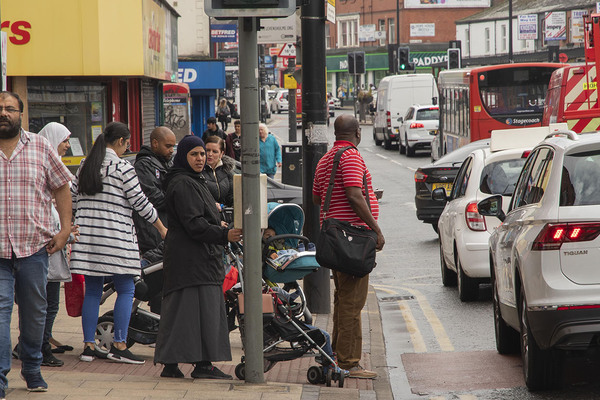Candidate: Levenshulme
Location: Manchester, UK
Category: The Great Neighbourhood Award
Year: 2020
Assessment Summary
Levenshulme is a suburb of Manchester between Stockport and Manchester city centre. It is predominantly a residential neighbourhood with a diverse, multi-cultural population of just over 15,000. It is very well connected to Manchester and the rest of the country through the Manchester to London railway line that passes through Levenshulme railway station and the A6 that runs through its centre. This is a mixed blessing as the A6 is a major Manchester transport corridor and a high polluting and potentially dangerous road that creates a barrier between the richer and poorer parts of the area.
It is an area that was pretty run down until 10 years ago both in terms of its housing and high street. It has however long been know as Manchester’s antiques and bric-a-brac district with the old town hall full of stalls and the activity spreading onto the southern part of the high street.
It is in the process of transition into becoming a popular residential suburb but is still rough at the edges, which currently defines its character and, along with low house prices, probably its attraction. There is a mix of both very poor and relatively wealthy areas including some very fine Victorian villas and typical industrial workers terraces. Apparently business rents are high however, there are also many low value retail uses, such as mobile phone and cash lending outlets interspersed with aspirational higher end offers including contemporary bars like the Station Hop, bakers, cafes, antique shops and a Lebanese bakery and café.
The history of this distinctive neighbourhood is charted in its social institutions, ventures and its retail environment. Ageing housing and high population densities have combined with the impact of deprivation and austerity to create difficult conditions for social improvement and regeneration. Despite this, social ventures have helped to generate a real spirit of community and change, and they offer many lessons. ‘Inspire’ is a great example of secular community and interfaith action based on the United Reform Church. The plans for Station South, a former railway station located on a disused line that is now part of the Sustrans route, illustrate the power of individual and group persistence and dynamism. The Sustrans route also provides a safe environment for cyclists, pedestrians and recreation. Public art has been used to improve and to celebrate the history of the area and part of the Sustrans route has been used successfully as a stage for small-scale theatre.
The Night Market, another community created business, has become a visitor destination in Manchester for its atmosphere and multicultural food stalls and as an emerging alternative food offer, it gives new hope for the future with a number of ‘spin-off’ businesses already created.
The impact of austerity and public sector cuts has created a vacuum that is being filled by community initiatives and often protests. The closure of the old swimming baths and library generated an impressive reaction from the local community that resulted in a new library and leisure centre.
Community leaders and activists are critical of the City Council but understand the need for close working. The greatest concern is that the Council does not understand the strength or potential of localism and place. Overall the neighbourhood is an uplifting example of social action by individuals and groups. It is difficult to grasp any greater strategic involvement of the Council, but Councillors appear supportive of the community effort.
Although there has been a significant amount of community activity there are still many issues. There are certainly challenges from the negative environmental impact of being on the strategically important A6 but benefits from the public transport infrastructure, including the main rail line. There are housing challenges from the condition of the ageing stock but buoyancy in the local market is reducing the impact. This may be restrained by a poor environment such as the quality of the public realm and the dirty and leaking station access that mars the initial perception of Levenshulme. Change is difficult in times of budgetary constraint but given the strength of the community, no doubt its efforts could be used to improve this as well.
The community involvement in Levenshulme is impressive and although it has got a long way to go, the sense of optimism is overwhelming.
Lead Assessor:
Tim Challans
AoUDeputy Lead Assessor:
Jef Smith AoU, Ann Wallis AoU





